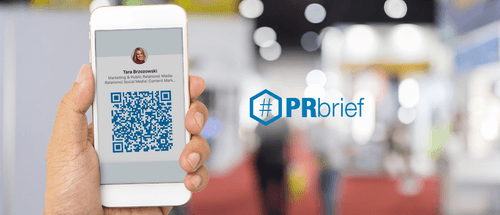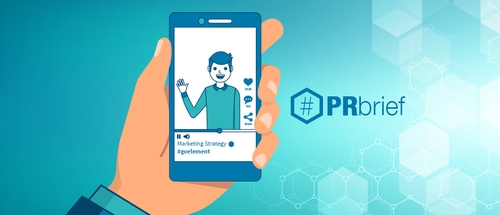What does the future of marketing look like? It’s digital, no doubt, and the newest (and trendiest) tactic is evolving before us: influencer relations. Public relations and marketing strategies are leaping into the digital world to build relationships with strong online personalities. Relationship building is no longer only a physical handshake but a direct message to a user’s Twitter inbox. As a full-service digital agency, we’re always adding to our marketing mix, and so should you.
It’s now an influencers’ world, and we’re just living in it. We’ll take you through the influencer relations basics and define different types, how they fit into the overall marketing strategy, and contracts. Ready? Let’s dive in.
What’s an influencer?
In a broad sense, an influencer is:
“An individual or group of individuals with established authority and access to, and influence over, an audience and the power to affect purchasing decisions or lifestyle choices.”
How does this relate to your marketing strategy, you ask? Influencers can help move the needle for your brand by leveraging influencers’ connections, which can reach niche audiences or large, wide-ranging audiences. Utilizing influencers is just a part of the marketing mix.
We’ve defined three categories of influencers:
Network
- Definition: A network of influencers is connected by content, location, or audience. These groups have a smaller reach with collective power.
- Cost: This influencer typically has a more minimal cost.
- Details and Use: Used for transactional, short-term tactics like product promotions, social media contests, and couponing. Networks are great for SEO optimization, digital word-of-mouth, and content syndication.
Brand Partner
- Definition: This is an influencer who has cultivated a highly-engaged audience. The audience size can vary.
- Cost: Partnering with these influencers might cost a bit more than networks and involve a long-term relationship.
- Details and Use: This type of influencer also might have an agent, be their own content creators, or work on a retainer payment system with you. Use brand ambassadors for long-term product promotions and brand advocacy development.
Brand Advocate
- Definition: A brand partner is an influencer with whom you have a mutually-beneficial partnership built on credibility and trust.
- Cost: Brand partners might not have any upfront, physical cost, but it boils down to time and resources invested to build and maintain the relationship.
- Details and Use: Audience size can vary. This type of influencer is ideal for information sharing, cross-community building, and ongoing brand advocacy. The key here is that the relationship is mutually beneficial.
The current influencer climate, aka The Wild Wild West, is filled with tons of influencers. If you have a child safety product, you could work with a mommy blogger network to promote the product. If you work with soccer sports gear, reach out to a soccer influencer to give your newest soccer cleats a test run. Influencers can be found on blogs, all social media platforms, forums, and online news outlets. Some of our clients’ favorite influencers are even animals! (Because they’re so cute, duh!)
How do I find the right influencers + fit them into my marketing strategy?
Before integrating an influencer strategy into the mix, think about this: Who is the target audience? What are the campaign goals? What is the message we’re trying to communicate? Does the influencer’s audience align with the campaign’s target audience? Could a relationship contribute to the campaign goals? If so, influencer relations might be a tactic worth tapping into.
Do I need a contract?
If you’re working with a paid influencer, always, always, always have a contract. It’s a safe bet to have things in a formally organized way to make sure each party, your company and the influencer, understands the expectations of the relationship.
Do your research! The American Marketing Association and Influencer Marketing Hub have contract advice and free-to-download templates, too.
If you’re working with an organic influencer, like a brand partner, a contract might not be necessary or appropriate. A strong relationship built on credibility and trust with a “win-win” mindset helps seal the deal for both parties. However, it’s still important to set guidelines and expectations with the influencer.
Overall, each influencer relationship is unique, so determine in advance if a contract would be needed.
What does an influencer cost?
There are many factors that affect the cost of a paid influencer, such as their location (west or east coast influencers might cost more than a Midwest influencer), the magnitude of their following, quality of their content, and audience engagement.
We’ve found benchmark numbers to help determine potential influencer costs:
- YouTube – $20 per 1,000 subscribers per video
- Blogs – $15 per 1,000 unique visitors per month
- Instagram – $10 per 1,000 followers per post
- Snapchat – $10 per 1,000 followers per post
- Facebook – $10 per 1,000 followers per post
InfluencerDB is a fantastic resource to help determine the media value per post.
With an organic influencer relationship, payment is often not necessary. Instead, there should be a mutually-beneficial agreement, such as the influencer receiving your new product and then advocating for your product on their social media platforms.
What should I keep in mind when working with influencers?
It’s important to remember that you’re working through influencers. In a paid relationship, you’ll have more control over the message and execution because of the contract, and in an organic relationship, you’ll have less control because the relationship is based on trust and that “win-win” mentality. Regardless of the expectations you have, the influencer will have input, too, because it’s their audience that they’ve cultivated. They know their audience best, and they will put their unique spin on the delivery.
Once the campaign is complete, continue nurturing your relationship with the influencer. Keeping a steady relationship with the influencer could lead to more promotion opportunities, and the influencer could transition to a brand partner in the future. Win-win!
How can I get ahead of the rest?
The marketing and PR world is changing every day, so make sure you stand apart from the noise. Influencer marketing is a tactic within a full marketing plan, and if you’re not sure where to start your influencer marketing strategy, contact our Element PR team, and we’d be glad to have a chat. We probably will geek out a bit because we love this kind of stuff.








